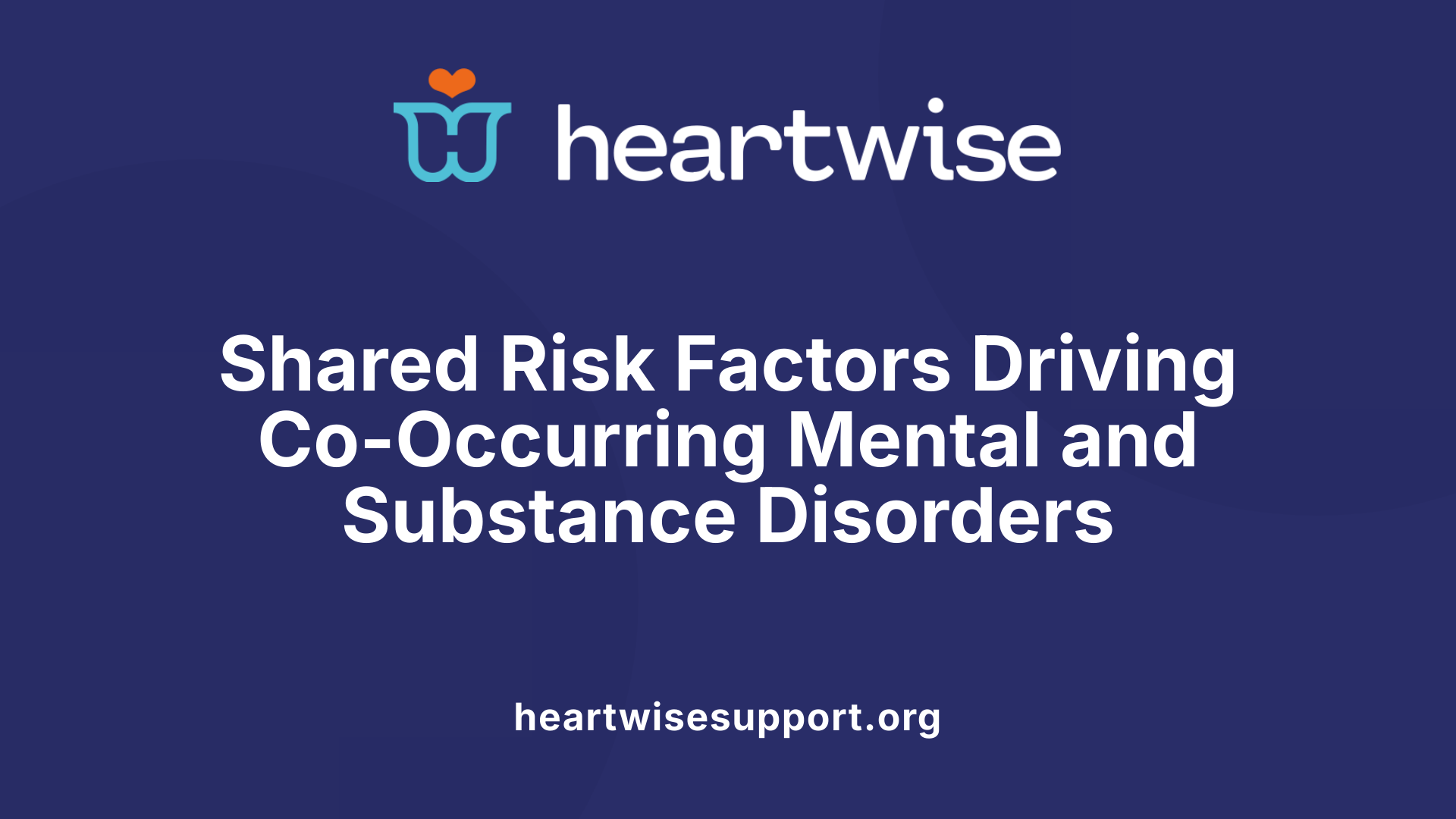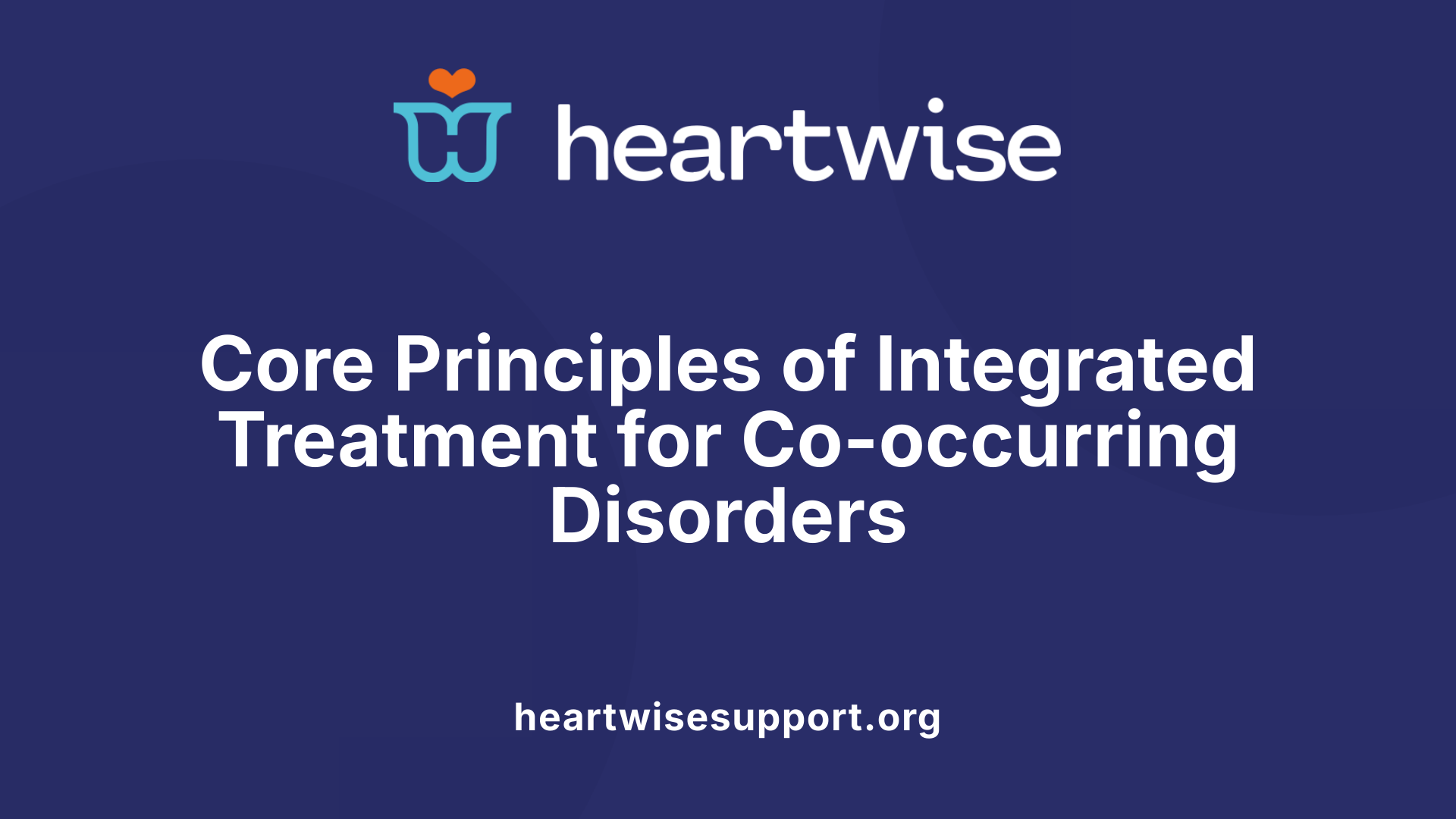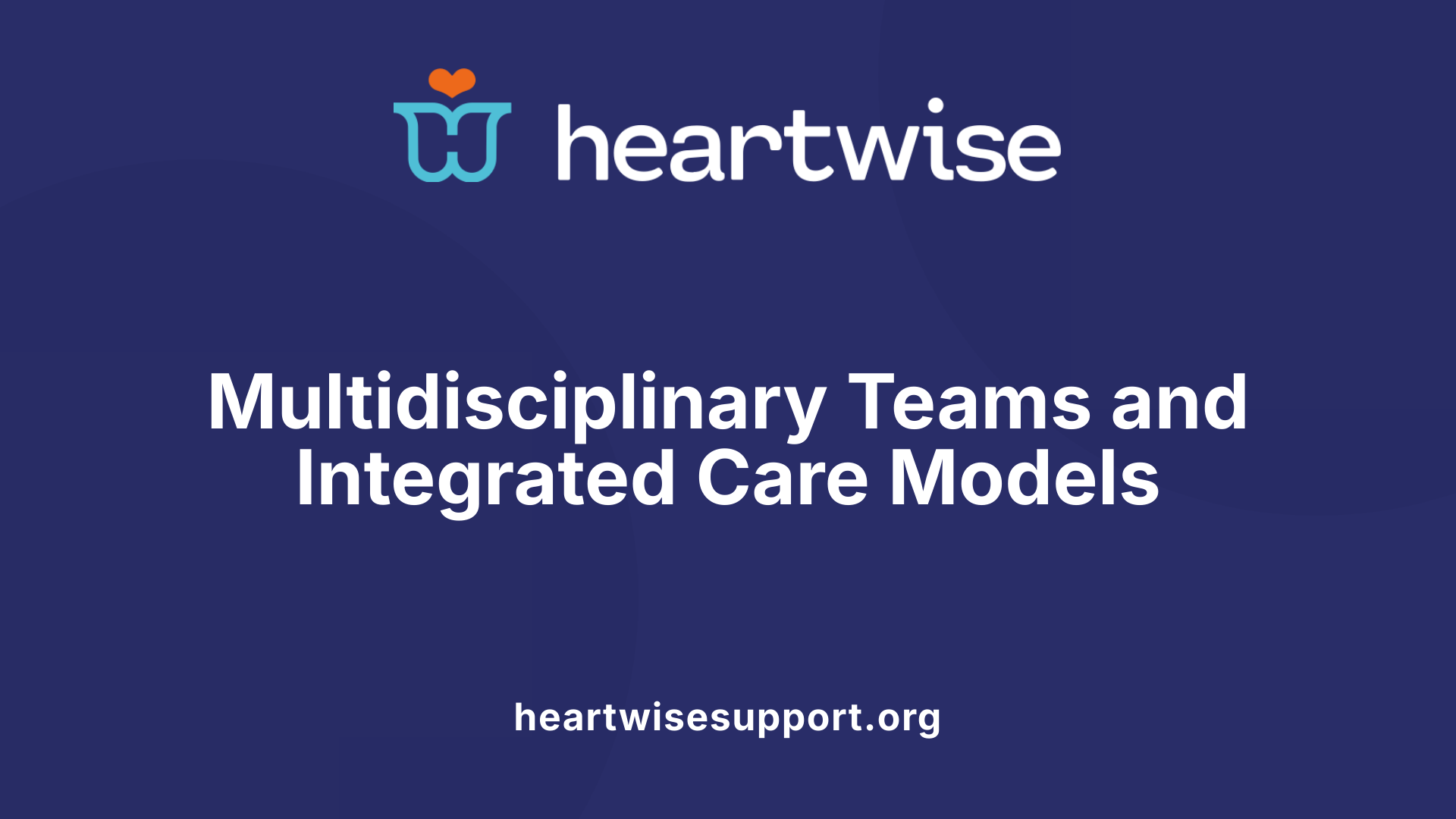Understanding Co-Occurring Conditions and Their Complexities
Co-occurring mental health and substance use disorders, often referred to as dual diagnosis, represent a significant challenge in mental health treatment. These conditions intersect in complex ways, influencing each other's severity and course, which necessitates integrated and person-centered approaches. Recognizing the prevalence and intricacies of these disorders underscores the importance of tailored interventions that can effectively address both mental health symptoms and substance use issues simultaneously, leading to better outcomes and improved quality of life.
Conceptual Framework of Dual Diagnosis and Its Significance
What is dual diagnosis in mental health?
Dual diagnosis refers to the presence of both a mental health disorder and a substance use disorder (SUD) within the same individual. This coexistence is quite common, especially among teenagers, those with serious mental illnesses, or individuals suffering from specific mental health issues. Shared risk factors such as genetics, childhood trauma, and ongoing stress contribute to the development of both conditions.
Research indicates a bidirectional relationship between mental health and substance use disorders. For example, mental health issues like depression or anxiety can lead individuals to self-medicate with alcohol or drugs, which might temporarily alleviate symptoms but eventually worsen the mental health condition. Conversely, substance abuse can alter brain chemistry, increasing vulnerability to mental health problems.
Effective management of dual diagnosis requires treating both disorders simultaneously. Integrated interventions typically involve behavioral therapies such as cognitive-behavioral therapy (CBT) or dialectical behavior therapy (DBT), medication, and support groups. These combined approaches aim to address the complex interactions between mental health and substance use, ultimately improving overall recovery outcomes.
Understanding dual diagnosis is vital for clinicians and caregivers because it highlights the importance of a coordinated, holistic treatment plan. Recognizing the intertwined nature of these disorders leads to more personalized care, reducing the risk of relapse and promoting sustained recovery.
The Complex Interplay and Common Co-Occurring Disorders

What are co-occurring mental health and substance use disorders?
Co-occurring mental health and substance use disorders, also known as dual diagnosis, involve the simultaneous presence of a mental health condition and a substance use disorder within an individual. These disorders often influence each other, with mental health issues sometimes leading to substance use as self-medication, and substance use exacerbating mental health symptoms.
Common mental health conditions linked with co-occurring disorders include depression, anxiety, schizophrenia, post-traumatic stress disorder (PTSD), and bipolar disorder. The substances involved can range from alcohol and opioids to stimulants and hallucinogens.
The coexistence of these disorders is often driven by shared factors such as genetics, brain chemistry alterations, environment, stress, and trauma. This complex interaction makes diagnosis and treatment challenging, requiring careful, integrated approaches that consider both mental health and substance use simultaneously.
By addressing both conditions together, healthcare providers can improve treatment outcomes, reduce relapse risks, and support long-term recovery. Recognizing the intertwined relationship of these disorders emphasizes the importance of comprehensive assessment and coordinated care strategies.
Barriers Hindering Effective Treatment and Access
What are the common barriers to effective treatment for co-occurring disorders?
Treating co-occurring disorders presents several challenges that can impede successful outcomes. Organizational issues, such as fragmented care systems, often disrupt continuity, making it difficult to sustain integrated treatment models that address both mental health and substance use issues simultaneously. Many clinics lack the necessary support and infrastructure to implement comprehensive programs consistently.
Another significant obstacle is the limited training and expertise among healthcare providers. Many clinicians learn about co-occurring disorders on the job without specialized education, which can lead to reliance on less effective practices. This lack of evidence-based knowledge hampers the delivery of quality care and diminishes treatment effectiveness.
Structural hurdles within the healthcare system also pose problems. Diagnostic and billing policies frequently require services to be coded for specific disorders, complicating the ability to provide truly integrated treatments. Such policies may restrict clinicians' flexibility to address both conditions concurrently, reducing the likelihood of holistic care.
Patients often face personal and societal barriers that reduce engagement. Stigma associated with mental illness and substance use can discourage individuals from seeking help or disclosing their struggles. Low motivation and mistrust in healthcare providers can further decrease participation in treatment programs.
Additionally, geographic and financial barriers limit access to care. Rural areas may lack specialized facilities or providers trained in dual diagnosis treatment, and inadequate insurance coverage can result in high out-of-pocket costs. These structural issues prevent many individuals from receiving comprehensive, person-centered care essential for successful recovery.
Overcoming these barriers requires concerted efforts to improve organizational infrastructure, enhance provider training, reform systemic policies, and reduce societal stigma, ensuring that all individuals have access to effective, integrated treatment services.
Strategic Approaches: Integrated Models and Evidence-Based Practices
 Integrated treatment for co-occurring disorders employs various models designed to address both mental health and substance use issues simultaneously. The three primary approaches include coordinated care, co-located services, and fully integrated systems.
Integrated treatment for co-occurring disorders employs various models designed to address both mental health and substance use issues simultaneously. The three primary approaches include coordinated care, co-located services, and fully integrated systems.
Coordinated care involves linking separate mental health and addiction treatment providers to work collaboratively, sharing information and planning care jointly. Co-located services bring mental health and substance use treatment into the same physical space, facilitating easier access and coordination. Fully integrated care, the most comprehensive model, combines both services into one unified program, often by the same team, ensuring that treatment strategies are harmonized from the outset.
Central to these models are core principles such as person-centeredness, which focuses on individual needs, preferences, and cultural backgrounds. Simultaneous treatment aims to address both disorders during the same treatment episode, reducing fragmentation and improving engagement.
Evidence-based practices underpin the effectiveness of integrated treatment. Therapies such as Cognitive Behavioral Therapy (CBT), Dialectical Behavior Therapy (DBT), and Motivational Interviewing (MI) are widely used. These approaches help clients recognize and modify negative thought and behavior patterns, enhance motivation to change, and develop coping strategies.
In addition to psychotherapy, pharmacotherapy tailored to individual needs complements behavioral interventions, especially in managing cravings and mood symptoms. Incorporating family involvement and peer support also strengthens recovery outcomes.
Successful implementation requires adherence to established guidelines like SAMHSA’s TIP 42, which provides detailed protocols for screening, assessment, and management. Consistent staff training, ongoing outcome monitoring, and organizational commitment to quality improvement are vital for fidelity to best practices.
Overall, these models and approaches foster a comprehensive, person-centered, and empirically supported framework for effectively treating individuals with co-occurring disorders.
Treatment Structures for Co-Occurring Disorders

How is co-occurring disorder treatment typically structured?
Treating co-occurring disorders involves a comprehensive approach that addresses both mental health issues and substance use problems at the same time. This integrated model ensures that care is person-centered, meaning that it is tailored to the individual’s unique needs and circumstances.
A core component of this approach is the use of multidisciplinary teams. These teams usually comprise psychiatrists, psychologists, addiction specialists, social workers, and case managers. Together, they develop personalized treatment plans that combine various therapies and medications.
Key therapy modalities include cognitive-behavioral therapy (CBT), which helps clients identify and change negative thought patterns; dialectical behavior therapy (DBT), effective for emotional regulation and distress tolerance; and motivational interviewing (MI), which enhances motivation and commitment to change.
Pharmacotherapy, especially medication-assisted treatment (MAT), plays a crucial role in managing symptoms, reducing cravings, and preventing relapse. Medications are carefully selected based on the individual’s specific mental health and substance use conditions.
Treatment models often adopt an integrated care approach, which means mental health and substance use treatments are coordinated within the same program or team. Other examples include assertive community treatment (ACT), which provides intensive support in community settings, and intensive case management (ICM), which helps clients navigate complex service systems.
Support services such as peer support groups, lifestyle coaching, and relapse prevention strategies are woven into treatment plans to promote long-term recovery and stability. Continuity of care and collaboration among healthcare providers, family members, and support networks are essential for helping clients maintain progress.
Overall, these structures aim to deliver evidence-based, holistic care that adapts to each person’s evolving needs. The goal is to improve treatment engagement, reduce symptoms, prevent relapses, and support sustainable recovery.
Therapeutic Techniques and Support Strategies in Dual Diagnosis Care
What are some effective therapeutic techniques for managing co-occurring disorders?
Treating individuals with co-occurring disorders requires an integrated approach that addresses both mental health and substance use issues simultaneously. Establishing a strong therapeutic alliance is foundational; it involves building trust through empathetic communication, cultural responsiveness, and genuine understanding of each client’s background and needs.
Evidence-based therapies such as cognitive-behavioral therapy (CBT), dialectical behavior therapy (DBT), and motivational interviewing (MI) are highly effective in dual diagnosis treatment. CBT helps clients identify and modify negative thought patterns contributing to emotional distress and substance use. It equips them with practical coping strategies to manage triggers and reduce relapse risk.
DBT, originally developed for borderline personality disorder, focuses on emotion regulation, distress tolerance, and interpersonal effectiveness, making it valuable for clients experiencing intense emotions and impulsivity common in co-occurring conditions.
Motivational interviewing enhances clients’ motivation to change by exploring ambivalence and fostering a collaborative, non-confrontational treatment environment. This approach is particularly useful for increasing engagement and readiness for change.
Relapse prevention techniques are integral, involving education about high-risk situations, developing personalized coping strategies, and planning for setbacks before they occur. Skill-building sessions aim to reinforce resilience, self-efficacy, and continuity of recovery.
Support from peers, involvement of family in therapy, and ongoing monitoring of symptoms and medication adherence are essential components of comprehensive care. Regular assessments help detect early signs of relapse or worsening symptoms, enabling timely interventions that keep recovery on track.
In summary, combining therapeutic rapport, empirically supported modalities, relapse management, and community support creates a personalized, holistic treatment plan that significantly improves outcomes for clients facing co-occurring disorders.
Empowering Recovery Through Integrated Care
Treating co-occurring mental health and substance use disorders requires a comprehensive, integrated approach that considers the complexity and uniqueness of each individual’s experience. Building a positive therapeutic alliance forms the foundation of effective treatment, fostering trust and engagement. Utilizing evidence-based practices—such as cognitive-behavioral therapy, motivational interviewing, and relapse prevention—enhances the likelihood of successful long-term recovery. Overcoming barriers like stigma, organizational challenges, and resource limitations is vital to expanding access to quality care. As models of integrated care evolve, including coordinated, co-located, and fully integrated systems, the focus remains on person-centered, culturally sensitive strategies that support clients throughout their recovery journey. Ultimately, comprehensive, collaborative treatment that addresses both mental health and substance use issues paves the way for healthier, more resilient lives.
References
- Chapter 5—Strategies for Working With People Who Have Co ...
- Managing Life with Co-Occurring Disorders - SAMHSA
- Integrating Treatment for Co-Occurring Mental Health Conditions
- Co-Occurring Disorder Treatment: Addressing Mental Health And ...
- Co-Occurring Disorders: Symptoms, Causes & Treatment
- Why Pick Dual Diagnosis Treatment for Co-Occurring Disorders
- Co-Occurring Disorders and Other Health Conditions - SAMHSA
- Integrated Treatment for Co-occurring Disorders
- Dual Diagnosis (Co-Occurring Disorders) - Cleveland Clinic
- Co-Occurring Statistics - Substance Abuse & Mental Health











